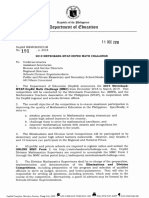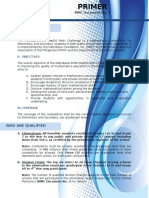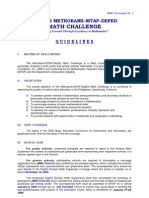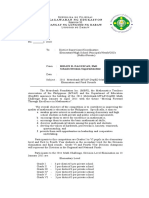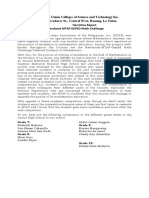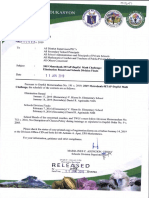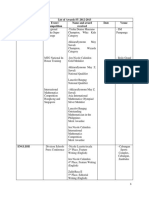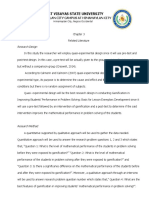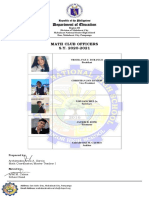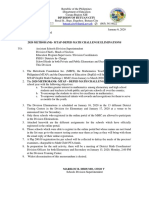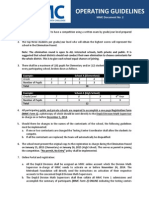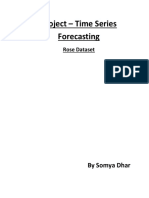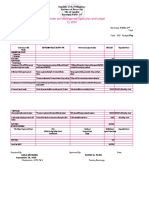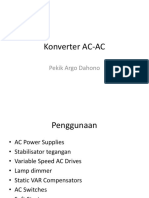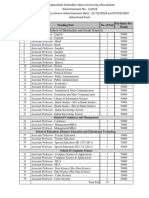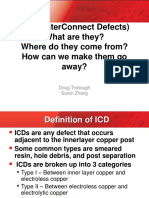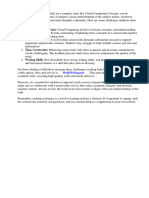0% found this document useful (0 votes)
156 views21 pagesCentral Philippines State University Hinoba-An Campus Graduate School
This thesis examines the predictors of winning teams in the Metrobank-MTAP-DepEd Math Challenge elimination round for secondary schools in Hinoba-an, Negros Occidental, Philippines. The study aims to determine factors such as the coaches' experience, number of review materials, and challengers' experience that influence team performance. Survey data will be collected from math challengers and coaches on their demographics and preparation activities. Correlation and regression analyses will identify relationships between predictors and winning teams to determine the most important factors for success. The results intend to help enhance preparation of future math challengers in Hinoba-an.
Uploaded by
ROSIELYN DELA CRUZCopyright
© © All Rights Reserved
We take content rights seriously. If you suspect this is your content, claim it here.
Available Formats
Download as DOCX, PDF, TXT or read online on Scribd
0% found this document useful (0 votes)
156 views21 pagesCentral Philippines State University Hinoba-An Campus Graduate School
This thesis examines the predictors of winning teams in the Metrobank-MTAP-DepEd Math Challenge elimination round for secondary schools in Hinoba-an, Negros Occidental, Philippines. The study aims to determine factors such as the coaches' experience, number of review materials, and challengers' experience that influence team performance. Survey data will be collected from math challengers and coaches on their demographics and preparation activities. Correlation and regression analyses will identify relationships between predictors and winning teams to determine the most important factors for success. The results intend to help enhance preparation of future math challengers in Hinoba-an.
Uploaded by
ROSIELYN DELA CRUZCopyright
© © All Rights Reserved
We take content rights seriously. If you suspect this is your content, claim it here.
Available Formats
Download as DOCX, PDF, TXT or read online on Scribd
/ 21





